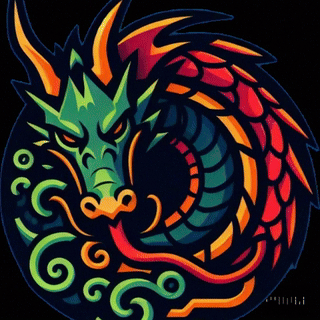Chapter 2: Ra – The Sun God Who Never Sleeps
If you were an ancient Egyptian, waking up every morning and seeing the sun rise wasn’t just a sign that it was time to get out of bed—it was proof that Ra, the great sun god, had once again won his nightly battle and was shining down on the world, keeping the darkness at bay.
Ra wasn’t just a sun god—he was the sun god. The top of the divine food chain. The boss. The light-bringer. The eye of the sky. Everything the sun touched was infused with his energy. Crops, warmth, vision, time itself. Ra was the ultimate symbol of life. But as we’ll see, his job was anything but easy.
The Birth of a Solar Legend
Ra’s origins are a little tangled, depending on which part of Egypt you’re asking about and what time period you’re in. At times, he’s his own being. Other times, he’s merged with Atum (as in Ra-Atum), especially in creation myths, or later with Amun, becoming Amun-Ra—the ultimate god-fusion move. But no matter the version, Ra always shines as the blazing heart of the cosmos.
He’s usually depicted as a man with the head of a falcon, crowned with a glowing sun disk, often wrapped with a cobra (that’s Wadjet, his divine protector). His eyes? Not just for seeing. One of them, the “Eye of Ra,” is a whole separate divine force—dangerous, vengeful, and powerful enough to wipe out humanity. But more on that in a bit.
Ra's Daily Grind
Picture this: Every morning, Ra boards his majestic solar boat—the Mandjet, or "Morning Boat"—and sails across the sky from east to west. As he moves, he lights up the world, bringing warmth and life. His crew of gods and spirits help him keep everything flowing smoothly.
But then night falls, and things take a dark turn—literally.
As the sun “sets,” Ra descends into the Duat, the Egyptian underworld. There, he boards a different boat, the Mesektet, and begins his perilous nighttime journey through a shadowy, twisted version of the world, where chaos lurks around every bend.
The biggest threat in the Duat? A monstrous serpent named Apophis (also called Apep). This thing is pure chaos—no motives, no goals, just the desire to unmake existence. Every single night, Apophis tries to stop Ra’s boat, to devour him, to smother the light forever. And every night, Ra and his team—including warrior gods like Set—have to battle this beast.
When Ra wins (which, thankfully, he always does), the sun rises once again. Egyptians believed this cycle—light, dark, battle, victory—was the very heartbeat of the universe. Every sunrise was a divine triumph.
The Eye of Ra – Divine Justice and Wrath
Now, about Ra’s eye—yes, he had one on his face, obviously. But the "Eye of Ra" was also something far more intense: a kind of living weapon. It wasn’t just a symbol—it was a divine force, often personified as a fierce goddess like Sekhmet or Hathor.
There’s this wild myth where Ra starts to get paranoid. He’s old, tired, and humans—his own creation—are starting to disrespect him. So, what does he do? He sends the Eye of Ra, in the form of Sekhmet, to teach humanity a lesson.
And she does. Brutally. Sekhmet goes on a blood-soaked rampage, absolutely wrecking everything in her path. Fields, villages, people—nothing is safe from her wrath. Eventually, Ra realizes things have gone a little too far, and he tricks Sekhmet into drinking a mix of beer and red dye (to make it look like blood). She drinks so much that she passes out, and when she wakes up, the bloodlust is gone. The destruction stops. Barely.
Moral of the story? Don’t mess with Ra. His love warms the earth, but his fury can scorch it.
Ra and the Pharaohs
In ancient Egypt, the pharaoh wasn’t just a king—he was a living god, chosen by the gods themselves to rule and maintain Ma’at (remember her from Chapter 1?). And who was at the center of that divine approval? You guessed it—Ra.
Every pharaoh claimed to be either the "Son of Ra" or descended from him. Ra’s power flowed through them. His protection surrounded them. His favor justified their rule. Temples were built in Ra’s honor, especially at Heliopolis, one of his most sacred cities. Obelisks—those giant pointed stone towers—were built to symbolize the sun’s rays and channel Ra’s power. Basically, Ra was everywhere.
The Aging God and the Rise of Others
Here’s something not many people realize: in later myths, Ra doesn’t stay the top god forever. As he ages, he becomes more distant, more tired. That’s when gods like Osiris, Isis, and Horus start rising in popularity. Amun merges with Ra to become the mighty Amun-Ra, trying to combine divine strength with old-school solar power.
Eventually, Ra takes more of a cosmic backseat. Still respected, still honored, but no longer the center of daily spiritual life. Think of him as the wise old founder of the divine dynasty—still powerful, but letting the younger generation handle things.
Why Ra Still Matters
Even though ancient Egyptian religion shifted over thousands of years, Ra remained a symbol of light, life, and the constant struggle against darkness. His daily voyage across the sky and through the underworld was more than just myth—it was a blueprint for how Egyptians viewed the world. Every day was a battle. Every night, a descent into danger. And every dawn? A hard-earned victory.
Ra taught people that light doesn’t just exist—it must be protected. That power comes with responsibility. That even gods get tired, but their purpose keeps them going.
So, the next time you watch the sun rise—or set—take a moment to imagine a golden boat cutting through the sky, a god at the helm, serpent battles raging beneath, and all of existence hanging in the balance.
And remember—Ra never sleeps.
480-366-3550 (Domain Sales)
© SDBEST LLC, 2025. All rights reserved.
Sponsorship Disclosure
Terms of Service
